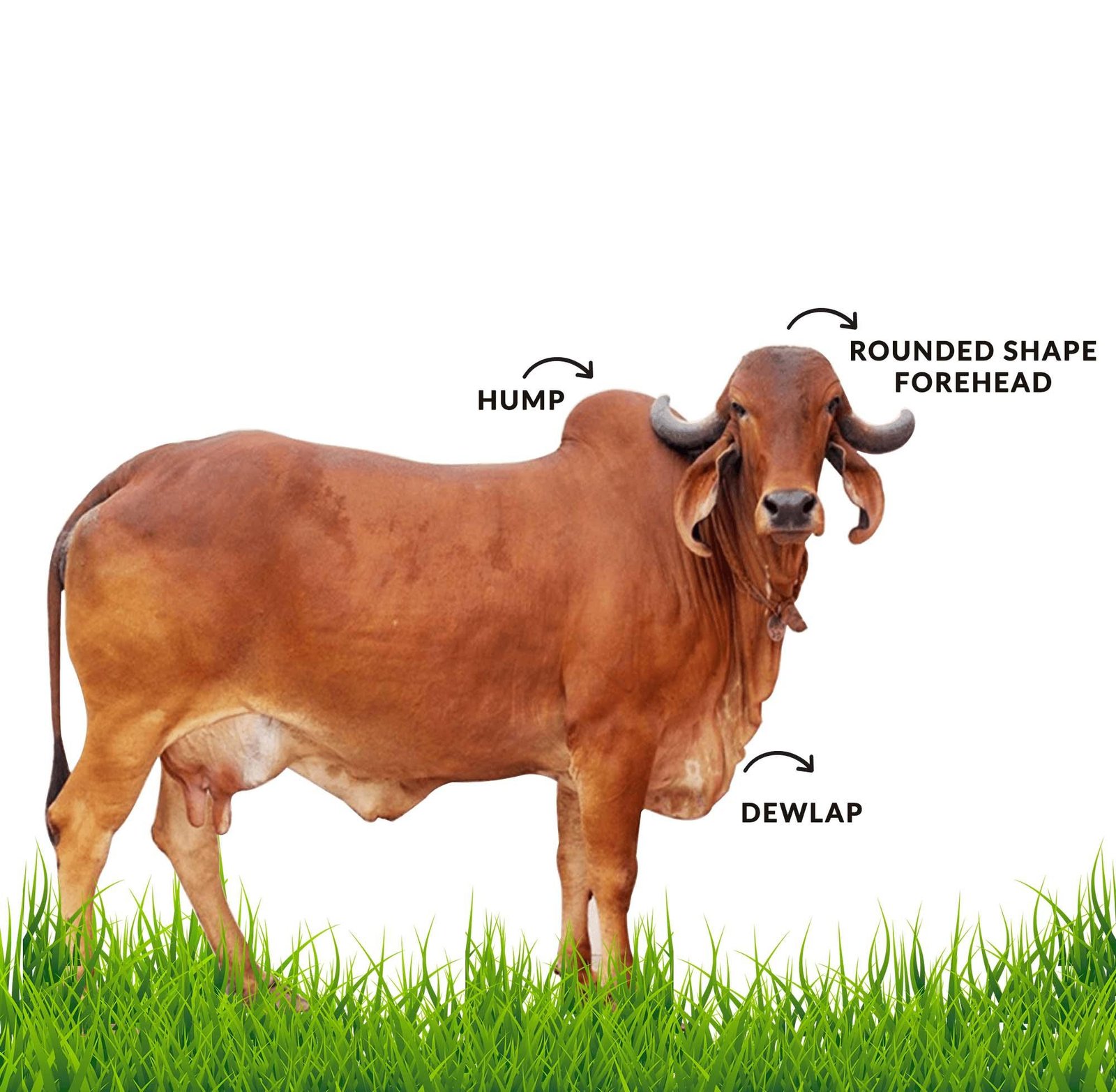GIR Cows Farming in India
GIR Cows – An Introduction
GIR cows are one of the most important cattle breeds which are raised by the Nomadic Tribes of the state which they use as a means of their livelihood. Gir cows are one of the oldest breeds in India and it is also known to be the purest breed of cow with the hump and loose dewlap characteristics. This cow also has International status because of the embryo and semen exported to International countries such as the United States, Mexico, Venezuela by Brazil. It is one of the best dairy cow breeds in the world.
Complete guide for the Organic Vegetable Farming
Gir cows native to the Indian subcontinent and have originated from the Gir hills and the forests of Katihar (Gujarat) but it is also found in many states in India now. It is also known by different names such as Gujarati, Sorthi, Surti, Kathiwari, Bhodali and Desan. They are well known for their adaptability and milk producing capacity. The milk produced is very rich in Vitamins & Nutrition. These cows are reared along with the GIR Bull by the Maldhari tribe to improve their breed genetics, yield of milk, reproduction, health and growth.
It is also known to have traces of gold in the Gir’s cow urine which has been proved by the scientists at the Junagadh Agricultural University. The cow’s urine has about 5100 compounds, of which 388 of them have medicinal properties which are useful in Ayurveda and other medicinal purposes. The cow’s dung and urine are both used as the main ingredient for organic agriculture and they are termed as biofertilizers and biopesticides as they are used to prevent fungal and parasitic infections in plants.
Physical Characteristics of Gir Cows
Gir cows have a well proportioned medium to large sized body with a round shape. They have a lot of loose soft skin which is very fine and silky to touch that prevents them from any parasitic infections and also keeps them warm. Their skin secretes a fluid called ‘sebum’ that repels insects.

Their faces are long narrow with a convex shaped forehead, long looped shaped tubular ears, and long sturdy legs. They have a hump between their shoulders (males are bigger and have more defined characteristics than females). They have a long loose dewlap with dark colored noses & feets. Their eyes are hooded and black pigmented which are aligned at the base of their horn. These horns are considered to be very sacred in India which is thick at the base and curved upwards.
How to do Integrated Farming System?
They have a long tail with a wider body area to dissipate the heat easily. They also have active sweat glands to adapt to all types of atmospheric conditions and resist sunlight & diseases. They weigh about 400 to 475kgs. They are very friendly and calm, docile types and love to be petted and brushed especially on their dewlap and backs. They can be tamed very easily and react to the owner’s commands.
Breeding & Milking information
The cows calve only once a year and it should have 12 to 14 month of inter-calving cycle. They are very fertile and they give birth very easily with the normal gestation and lactation period. They are known to live between 12 to 15 years producing 6 to 10 calves upto 10 years of age with high quality milk producing capacity.
Their breeding cycle lasts for 6 to 24 hours with an average of 17 to 24 days of estrous cycle that lasts for 24 hours. The first estrous cycle is seen in 20 to 24 months with proper feeding. They have a gestation period of about 280 to 285 days and can give milk for about 310 days after calving.
Housing Facilities for Gir cows
The houses are made of concrete with a roof height of about 16 to 18 feets in the center and about 8 feets in the sides. It should have well aeration facing North-South direction. The walls should be made of bricks and have a cemented floor. It can also be made of thatched tiles for a low budget. Each cattle should get 5 sq. metre of space and should maintain dryness. For removal of trash, it should have a well drainage facility and it should be thoroughly cleaned every time to prevent the spread of bacteria, mosquitoes, parasites and viruses.
How can you produce vermicompost in villages?

Feeding of Gir cows
Feeding is a very important factor in the farming of Cows as it promotes health, production and growth. Feeding occupies about 50% of the total cost of farming so to reduce this cost practice open grazing as it would also provide the required nourishment.
Their feeding includes green Jowar, Bajra straw, Groundnut cake, dry fodder, cotton seed cake, soya bean husk, coconut and jaggery. It also includes vegetables such as carrot, beetroot, and drumsticks. The cows are feeded regularly following an appropriate routine but overfeeding should be avoided. The grains should be provided in the form of medium ground powder. Their feed should be kept in dry places to avoid bacteria and moulds and each cow should be given their feeds according to their growing stage & condition. Water should also be provided to them in adequate quantities regularly.
Health care facilities for Gir cows
Gir cattle have a very low mortality rate. The two main reasons for the mortality of calves are:
- Broncho-pneumonia
- Pneumo-Enteritis
Moringa cultivation guide for beginners.
When the calves are about 1 or 2 weeks old they are given the ‘viral respiratory vaccine’ and when they are 1 to 3 months old, they are given ‘Clostridial vaccination’.
The Gir cows face Respiratory disorders such as:
- Prolapse
- Placenta retention
- Dystocia etc

They also get a disease called ‘Deg Nala’ due to the infection caused by the fungus present in the wheat straw or rice which they are feeded with. This disease affects their legs due to which they cannot move and to control this disease they are given proper antibiotics and anti inflammatory drugs. The cows are also treated with the bombing at an interval of 30 days.
They are affected by many other diseases like:
- Digestive disorders
- Jaundice
- Anthrax
- Anaplasmosis
- Anaemia
- Foot and mouth disorders
- Hypomagnesemia
- Lead poisoning
- Rinderpest
- Black quarter
- Ectoparasites
- Endoparasites
- Mastitis
- Ringworms
The cattles can live longer by maintaining proper care & hygiene with suitable treatments.
Yield of Milk by Gir cows
The Gir cow breed has an average production of about 1590 kg of milk per lactation. During the first calving process, it produces 1600 to 1700 kg but for mature cows, it produces 1800 to 2000 kg of milk per lactation. The milk has two protein groups – Casein and Whey protein. It contains 4.69% – 4.97% of fats on average. The milk that contains 80% casein and is called A2 milk and this type of milk has been proven to reduce:
- autism
- type 1 diabetes
- neurological disorders
- immunity problems
- endocrine disorders
- schizophrenia
Benefits of Gir cow Farming
Some of the benefits are listed below:
- It is one of the best Dairy breed found in India
- It produces high quality milk with higher quantity with A2 casein protein
- It is a highly adaptable breed
- It does not require a big maintenance structure
- It has a low rate of mortality and it can live for around 12 to 15 years
- They have a high mortality rate and can produce 10 calves at an average
- They are resistant to many diseases
- The milk value is very high and is adaptable to mechanical milking.
Problems in Agriculture at present time.
Economics of Gir Cow Farming
The economics is taken as an example and the actual cost may fluctuate a little up or down. The costs also depend on the location and demand of the cattle in the area.
The estimation is based on the following:
- Cost of 1 Gir cow = ₹30,000 but it may range to ₹60,000 – ₹2,00,000.
- Milk yield = 10l per day on average
- Space required for each animal = 40sqft (cow) & 20sqft (calf)
- Construction cost for 1 sq ft area = ₹250
- Cost of equipment per animal = ₹1000
- Concrete feed cost = ₹16 per kg
- Dry fodder cost = ₹1 per kg
- Total animals reared = 4
How to prepare best kitchen garden?
| Type of Facility | Cost |
| Cow shed for 4 cows at ₹250/sq ft & 40sqft per cow area | ₹40,000 |
| Calf shed for 4 calfs at ₹250/sq ft & 20sqft per calf area | ₹20,000 |
| Cost of 4 cows | ₹1,20,000 |
| Transportation @₹1000 per cow | ₹4,000 |
| Chaff shutter | ₹10,000 |
| Appliances | ₹4,000 |
| Farm Electrification | ₹12,000 |
| Recurring Capital (Total) | ₹2,10,000 |
| Cost of feed ( 1 month) | ₹5,000 |
| Animal insurance @ 5% of animal cost | ₹6,000 |
| Fodder cultivation for 1 acre land | ₹10,000 |
| Vaccine, Electricity & Other costs | ₹9,000 |
| Expenditure (Total) | ₹30,000 |
| Total Farm Cost | ₹2,40,000 |
Profit Estimation
The Average milk produced per day by each cow is taken as 10 litres, i.e 40litres for 4 cows.
Selling price = ₹27/l (average)
Selling price for 40litres = ₹1,080 per day
Total income in 1 month = ₹32,000
Total income in 1 year = ₹3,88,800
Annual profit = Annual income – Total farm cost = ₹1,48,800
How to do Green House Farming?
Conclusion
Gir cows are a very important breed and to prevent them and improve their present conditions, much research has started to develop. The qualitative and quantitative traits of the breed are characterized to study the molecular aspects of their genes and descriptors of breed and the germplasm of the animal are also conserved.




